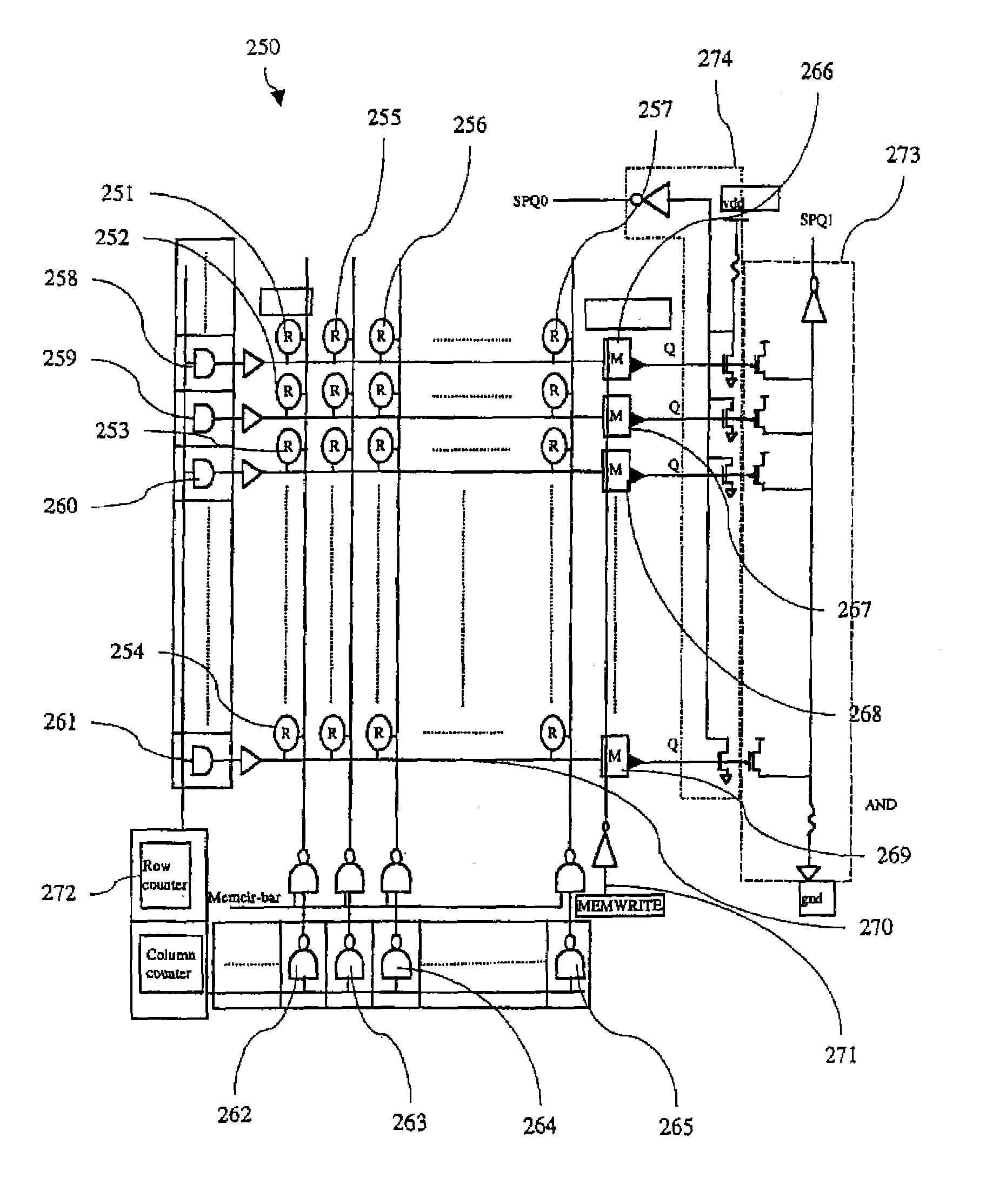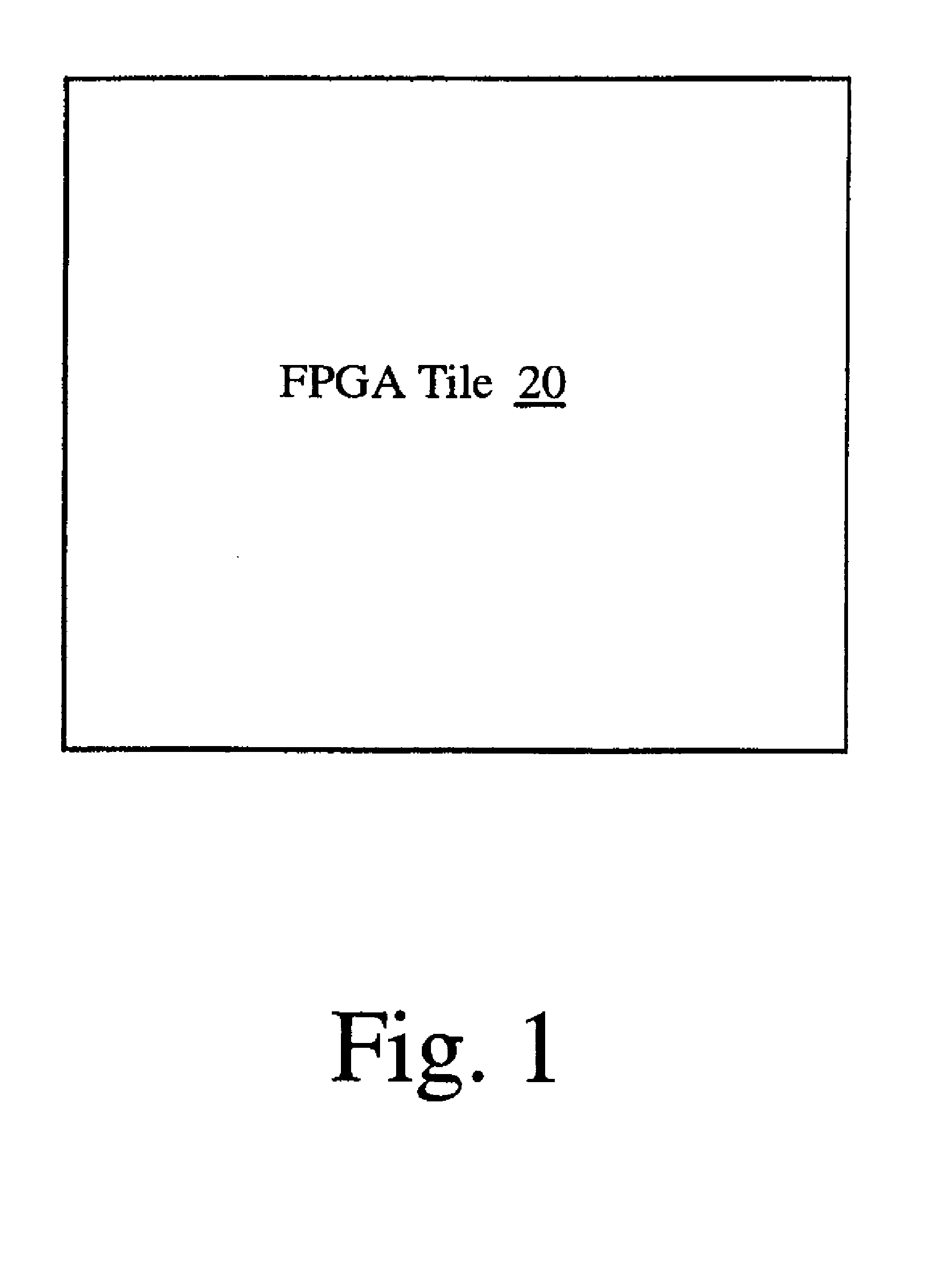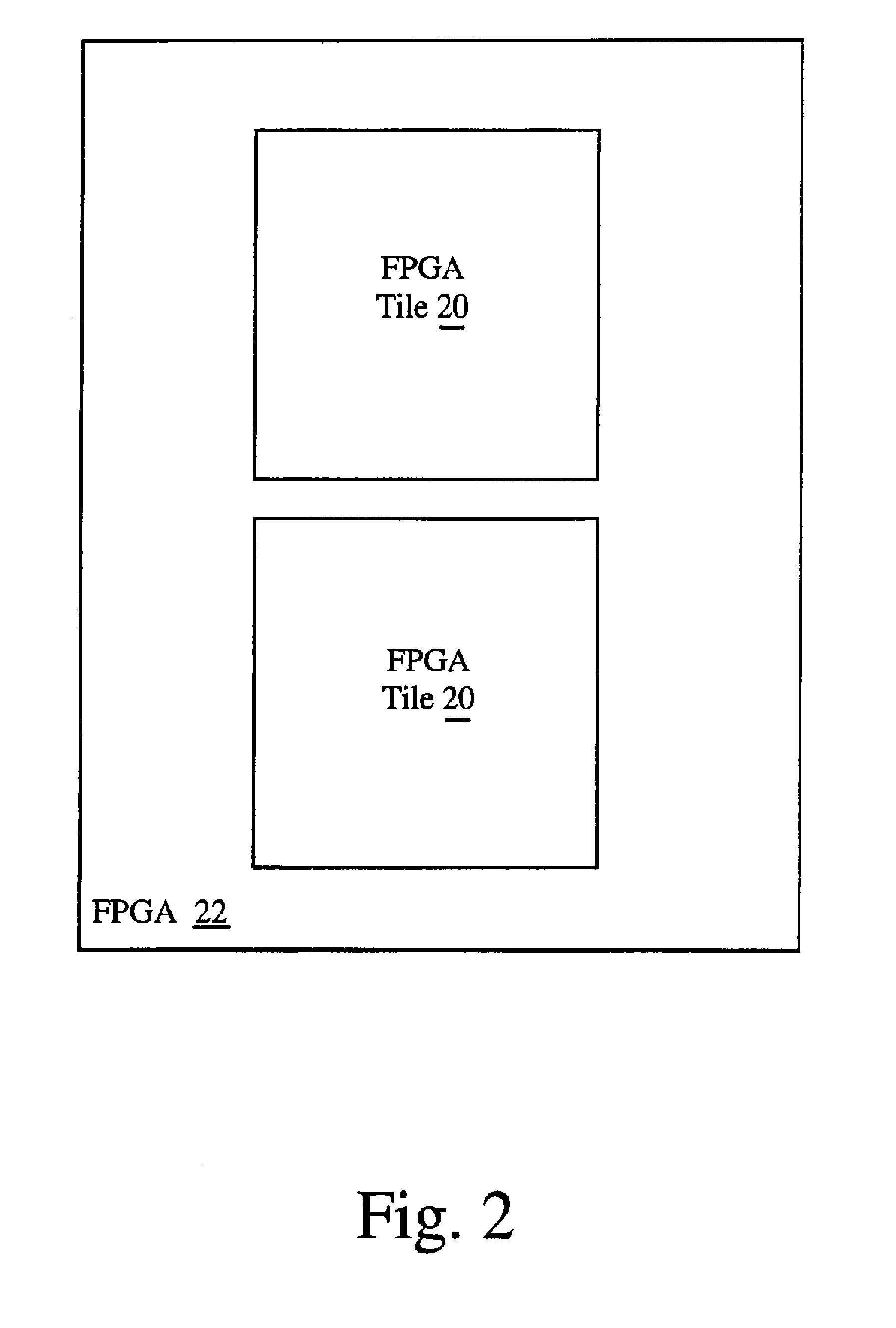Method and apparatus of memory clearing with monitoring RAM memory cells in a field programmable gated array
a technology of ram memory cells and field programmable gate arrays, applied in the direction of pulse techniques, instruments, computation using denominational number representations, etc., can solve the problems of not being flexible and unable to be reconfigured to perform a different function
- Summary
- Abstract
- Description
- Claims
- Application Information
AI Technical Summary
Problems solved by technology
Method used
Image
Examples
Embodiment Construction
[0035]Referring to FIG. 1, there is illustrated a field-programmable gate array (FPGA) tile 20 in accordance with the present disclosed system. The FPGA tile 20 overcomes many of the disadvantages of conventional FPGAs in that it can be easily adapted for use in both integrated circuits (ICs) requiring large FPGAs and ICs requiring small FPGAs. Furthermore, the FPGA tile 20 can be used where the FPGA is to be manufactured as its own IC and where the FPGA is to be embedded into a larger IC (e.g., a system on a chip (SOC)).
[0036]One feature of the FPGA tile 20 that makes it such a flexible and adaptable device is that it is “tileable”. As used herein, the term “tileable” means that the FPGA tile 20 can be combined with other FPGA tiles to form a larger FPGA. For example, FIG. 2 illustrates an FPGA 22 that is formed by combining two FPGA tiles 20. The two FPGA tiles 20 work together and communicate with each other to form the larger FPGA 22. It should be well understood that any number...
PUM
 Login to View More
Login to View More Abstract
Description
Claims
Application Information
 Login to View More
Login to View More - R&D
- Intellectual Property
- Life Sciences
- Materials
- Tech Scout
- Unparalleled Data Quality
- Higher Quality Content
- 60% Fewer Hallucinations
Browse by: Latest US Patents, China's latest patents, Technical Efficacy Thesaurus, Application Domain, Technology Topic, Popular Technical Reports.
© 2025 PatSnap. All rights reserved.Legal|Privacy policy|Modern Slavery Act Transparency Statement|Sitemap|About US| Contact US: help@patsnap.com



